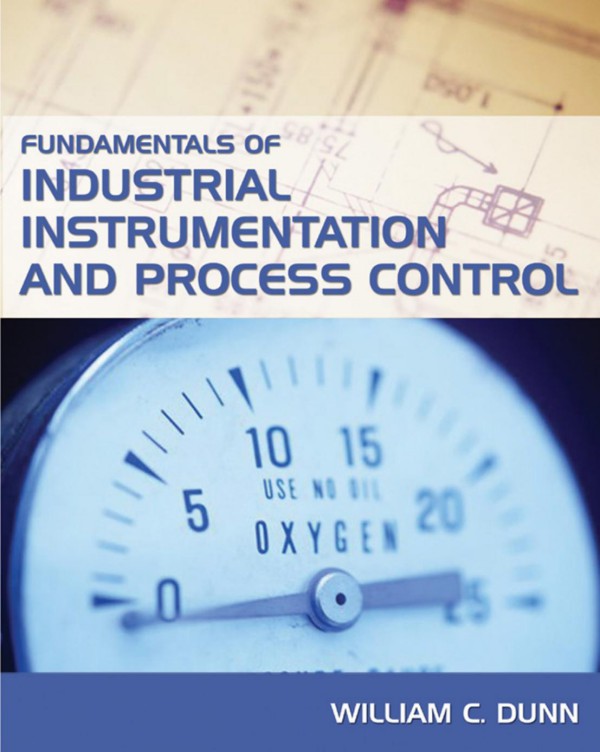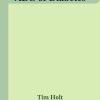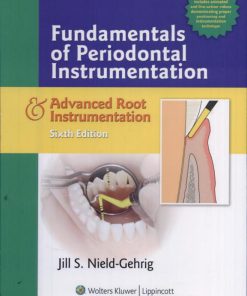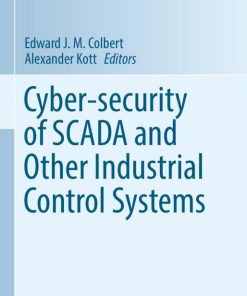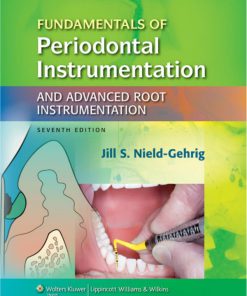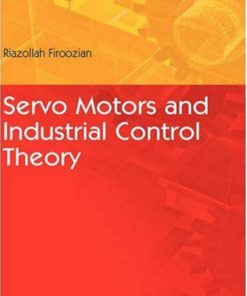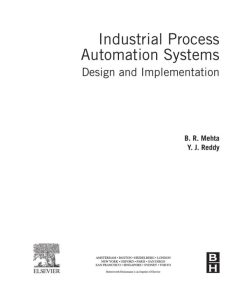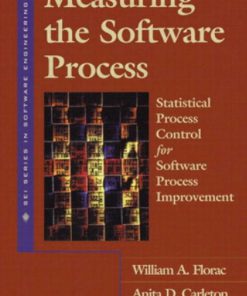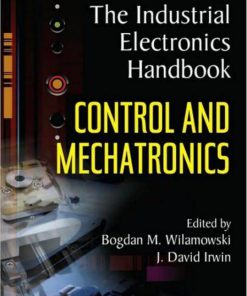Fundamentals of Industrial Instrumentation and Process Control 1st edition by William Dunn 9780071466936 0071466932
$50.00 Original price was: $50.00.$25.00Current price is: $25.00.
Authors:William Dunn , Series:Mechatronics Engineering [89] , Tags:Technology & Engineering; Measurement; Civil; General , Author sort:Dunn, William , Ids:9780071466936 , Languages:Languages:eng , Published:Published:Apr 2005 , Publisher:McGraw Hill Professional , Comments:Comments:Instrumentation technicians work on pneumatics, electronic instruments, digital logic devices and computer-based process controls. Because so much of their work involves computerized devices, they need an extensive knowledge of electronics, and most have degrees in electronics technology. Most textbooks in this area are written for four year institutions and lack the practical flavor that is needed in technical schools or community colleges. Designed as a text for use in community colleges or vocational schools, this up to date text is unsurpassed in its treatment of such subjects as: instruments and parameters, electrical components(both analog and digital) various types of actuators and regulators, plumbing and instrumentation diagrams and Operation of process controllers.
Fundamentals of Industrial Instrumentation and Process Control 1st edition by William Dunn – Ebook PDF Instant Download/Delivery. 9780071466936, 0071466932
Full download Fundamentals of Industrial Instrumentation and Process Control 1st edition after payment
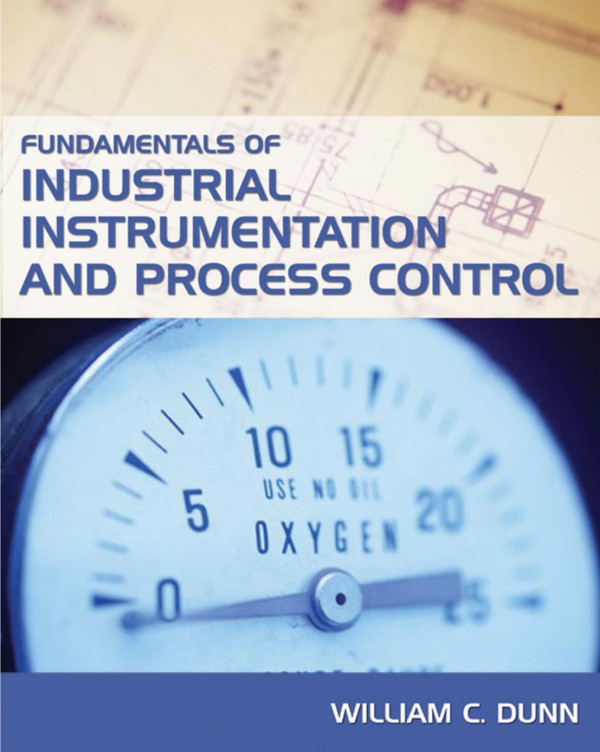
Product details:
ISBN 10: 0071466932
ISBN 13: 9780071466936
Author: William C. Dunn
Instrumentation technicians work on pneumatics, electronic instruments, digital logic devices and computer-based process controls. Because so much of their work involves computerized devices, they need an extensive knowledge of electronics, and most have degrees in electronics technology. Most textbooks in this area are written for four year institutions and lack the practical flavor that is needed in technical schools or community colleges. Designed as a text for use in community colleges or vocational schools, this up to date text is unsurpassed in its treatment of such subjects as: instruments and parameters, electrical components(both analog and digital) various types of actuators and regulators, plumbing and instrumentation diagrams and Operation of process controllers.
Fundamentals of Industrial Instrumentation and Process Control 1st Table of contents:
Chapter 1. Introduction and Review
Chapter Objectives
1.1 Introduction
1.2 Process Control
1.3 Definitions of the Elements in a Control Loop
1.4 Process Facility Considerations
1.5 Units and Standards
1.6 Instrument Parameters
Summary
Problems
Chapter 2. Basic Electrical Components
Chapter Objectives
2.1 Introduction
2.2 Resistance
2.2.1 Resistor formulas
2.2.2 Resistor combinations
2.2.3 Resistive sensors
2.3 Capacitance
2.3.1 Capacitor formulas
2.3.2 Capacitor combinations
2.4 Inductance
2.4.1 Inductor formulas
2.4.2 Inductor combinations
Summary
Problems
Chapter 3. AC Electricity
Chapter Objectives
3.1 Introduction
3.2 Circuits with R, L, and C
3.2.1 Voltage step
3.2.2 Time constants
3.2.3 Phase change
3.3 RC Filters
3.4 AC Bridges
3.5 Magnetic Forces
3.5.1 Magnetic fields
3.5.2 Analog meter
3.5.3 Electromechanical devices
Summary
Problems
Chapter 4. Electronics
Chapter Objectives
4.1 Introduction
4.2 Analog Circuits
4.2.1 Discrete amplifiers
4.2.2 Operational amplifiers
4.2.3 Current amplifiers
4.2.4 Differential amplifiers
4.2.5 Buffer amplifiers
4.2.6 Nonlinear amplifiers
4.2.7 Instrument amplifier
4.2.8 Amplifier applications
4.3 Digital Circuits
4.3.1 Digital signals
4.3.2 Binary numbers
4.3.3 Logic circuits
4.3.4 Analog-to-digital conversion
4.4 Circuit Considerations
Summary
Problems
Chapter 5. Pressure
Chapter Objectives
5.1 Introduction
5.2 Basic Terms
5.3 Pressure Measurement
5.4 Pressure Formulas
5.5 Measuring Instruments
5.5.1 Manometers
5.5.2 Diaphragms, capsules, and bellows
5.5.3 Bourdon tubes
5.5.4 Other pressure sensors
5.5.5 Vacuum instruments
5.6 Application Considerations
5.6.1 Selection
5.6.2 Installation
5.6.3 Calibration
Summary
Problems
Chapter 6. Level
Chapter Objectives
6.1 Introduction
6.2 Level Formulas
6.3 Level Sensing Devices
6.3.1 Direct level sensing
6.3.2 Indirect level sensing
6.4 Application Considerations
Summary
Problems
Chapter 7. Flow
Chapter Objectives
7.1 Introduction
7.2 Basic Terms
7.3 Flow Formulas
7.3.1 Continuity equation
7.3.2 Bernoulli equation
7.3.3 Flow losses
7.4 Flow Measurement Instruments
7.4.1 Flow rate
7.4.2 Total flow
7.4.3 Mass flow
7.4.4 Dry particulate flow rate
7.4.5 Open channel flow
7.5 Application Considerations
7.5.1 Selection
7.5.2 Installation
7.5.3 Calibration
Summary
Problems
Chapter 8. Temperature and Heat
Chapter Objectives
8.1 Introduction
8.2 Basic Terms
8.2.1 Temperature definitions
8.2.2 Heat definitions
8.2.3 Thermal expansion definitions
8.3 Temperature and Heat Formulas
8.3.1 Temperature
8.3.2 Heat transfer
8.3.3 Thermal expansion
8.4 Temperature Measuring Devices
8.4.1 Thermometers
8.4.2 Pressure-spring thermometers
8.4.3 Resistance temperature devices
8.4.4 Thermistors
8.4.5 Thermocouples
8.4.6 Semiconductors
8.5 Application Considerations
8.5.1 Selection
8.5.2 Range and accuracy
8.5.3 Thermal time constant
8.5.4 Installation
8.5.5 Calibration
8.5.6 Protection
Summary
Problems
Chapter 9. Humidity, Density, Viscosity, and pH
Chapter Objectives
9.1 Introduction
9.2 Humidity
9.2.1 Humidity definitions
9.2.2 Humidity measuring devices
9.3 Density and Specific Gravity
9.3.1 Basic terms
9.3.2 Density measuring devices
9.3.3 Density application considerations
9.4 Viscosity
9.4.1 Basic terms
9.4.2 Viscosity measuring instruments
9.5 pH Measurements
9.5.1 Basic terms
9.5.2 pH measuring devices
9.5.3 pH application considerations
Summary
Problems
Chapter 10. Other Sensors
Chapter Objectives
10.1 Introduction
10.2 Position and Motion Sensing
10.2.1 Basic position definitions
10.2.2 Position and motion measuring devices
10.2.3 Position application consideration
10.3 Force, Torque, and Load Cells
10.3.1 Basic definitions of force and torque
10.3.2 Force and torque measuring devices
10.3.3 Force and torque application considerations
10.4 Smoke and Chemical Sensors
10.4.1 Smoke and chemical measuring devices
10.4.2 Smoke and chemical application consideration
10.5 Sound and Light
10.5.1 Sound and light formulas
10.5.2 Sound and light measuring devices
10.5.3 Light sources
10.5.4 Sound and light application considerations
Summary
Problems
Chapter 11. Actuators and Control
Chapter Objectives
11.1 Introduction
11.2 Pressure Controllers
11.2.1 Regulators
11.2.2 Safety valves
11.2.3 Level regulators
11.3 Flow Control Actuators
11.3.1 Globe valve
11.3.2 Butterfly valve
11.3.3 Other valve types
11.3.4 Valve characteristics
11.3.5 Valve fail safe
11.4 Power Control
11.4.1 Electronic devices
11.4.2 Magnetic control devices
11.5 Motors
11.5.1 Servo motors
11.5.2 Stepper motors
11.5.3 Valve position feedback
11.5.4 Pneumatic feedback
11.6 Application Considerations
11.6.1 Valves
11.6.2 Power devices
Summary
Problems
Chapter 12. Signal Conditioning
Chapter Objectives
12.1 Introduction
12.2 Conditioning
12.2.1 Characteristics
12.2.2 Linearization
12.2.3 Temperature correction
12.3 Pneumatic Signal Conditioning
12.4 Visual Display Conditioning
12.4.1 Direct reading sensors
12.5 Electrical Signal Conditioning
12.5.1 Linear sensors
12.5.2 Float sensors
12.5.3 Strain gauge sensors
12.5.4 Capacitive sensors
12.5.5 Resistance sensors
12.5.6 Magnetic sensors
12.5.7 Thermocouple sensors
12.5.8 Other sensors
12.6 A-D Conversion
Summary
Problems
Chapter 13. Signal Transmission
Chapter Objectives
13.1 Introduction
13.2 Pneumatic Transmission
13.3 Analog Transmission
13.3.1 Noise considerations
13.3.2 Voltage signals
13.3.3 Current signals
13.3.4 Signal conversion
13.3.5 Thermocouples
13.3.6 Resistance temperature devices
13.4 Digital Transmission
13.4.1 Transmission standards
13.4.2 Smart sensors
13.4.3 Foundation Fieldbus and Profibus
13.5 Controller
13.5.1 Controller operation
13.5.2 Ladder diagrams
13.6 Digital-to-Analog Conversion
13.6.1 Digital-to-analog converters
13.6.2 Pulse width modulation
13.7 Telemetry
13.7.1 Width modulation
13.7.2 Frequency modulation
Summary
Problems
Chapter 14. Process Control
Chapter Objectives
14.1 Introduction
14.2 Basic Terms
14.3 Control Modes
14.3.1 ON/OFF action
14.3.2 Differential action
14.3.3 Proportional action
14.3.4 Derivative action
14.3.5 Integral action
14.3.6 PID action
14.4 Implementation of Control Loops
14.4.1 ON/OFF action pneumatic controller
14.4.2 ON/OFF action electrical controller
14.4.3 PID action pneumatic controller
14.4.4 PID action control circuits
14.4.5 PID electronic controller
14.5 Digital Controllers
Summary
Problems
Chapter 15. Documentation and Symbols
Chapter Objectives
15.1 Introduction
15.2 System Documentation
15.2.1 Alarm and trip systems
15.2.2 Alarm and trip documentation
15.2.3 PLC documentation
15.3 Pipe and Identification Diagrams
15.3.1 Standardization
15.3.2 Interconnections
15.3.3 Instrument symbols
15.3.4 Instrument identification
15.4 Functional Symbols
15.4.1 Actuators
15.4.2 Primary elements
15.4.3 Regulators
15.4.4 Math functions
15.5 P and ID Drawings
People also search for Fundamentals of Industrial Instrumentation and Process Control 1st:
fundamentals of industrial instrumentation and process control
fundamentals of instrumentation
fundamentals of industrial engineering
fundamentals of industrial hygiene

